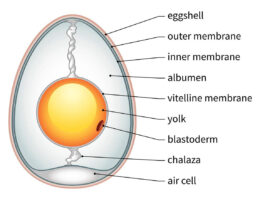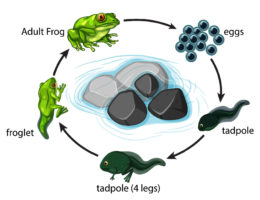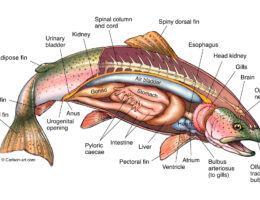Skip to content
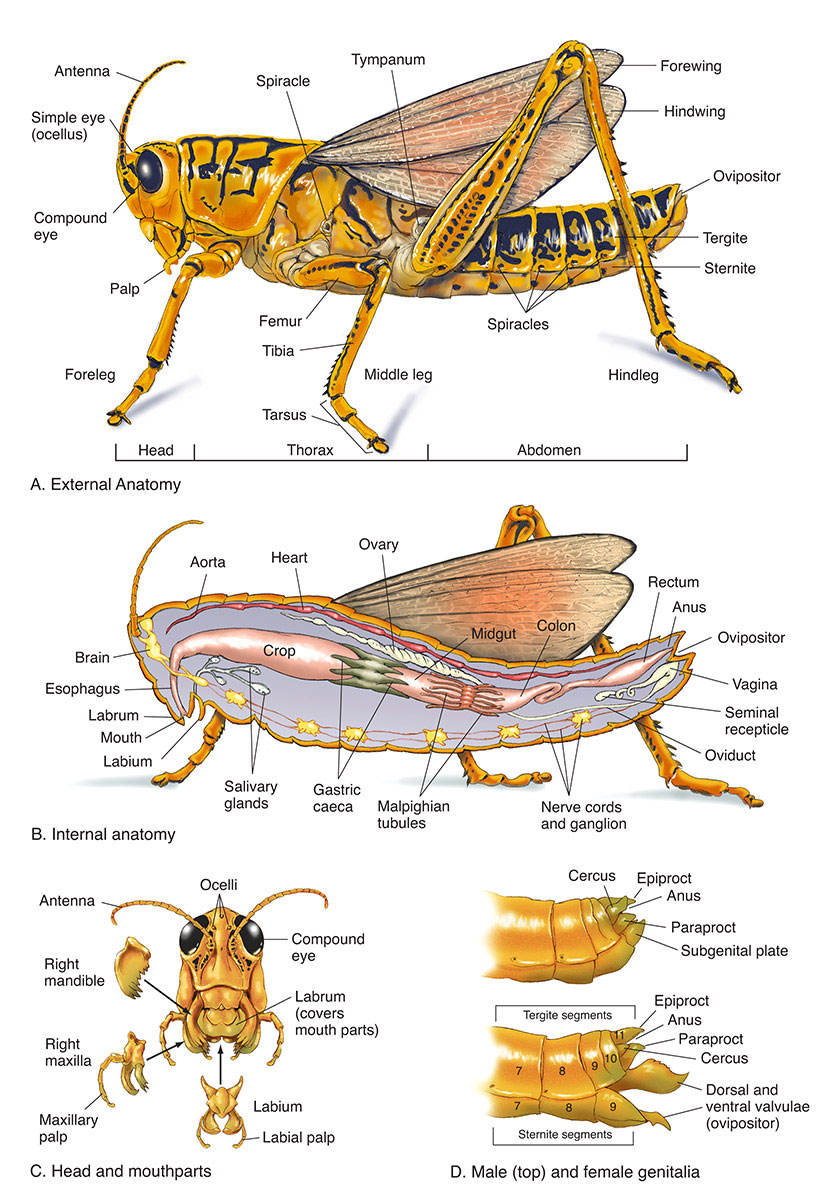
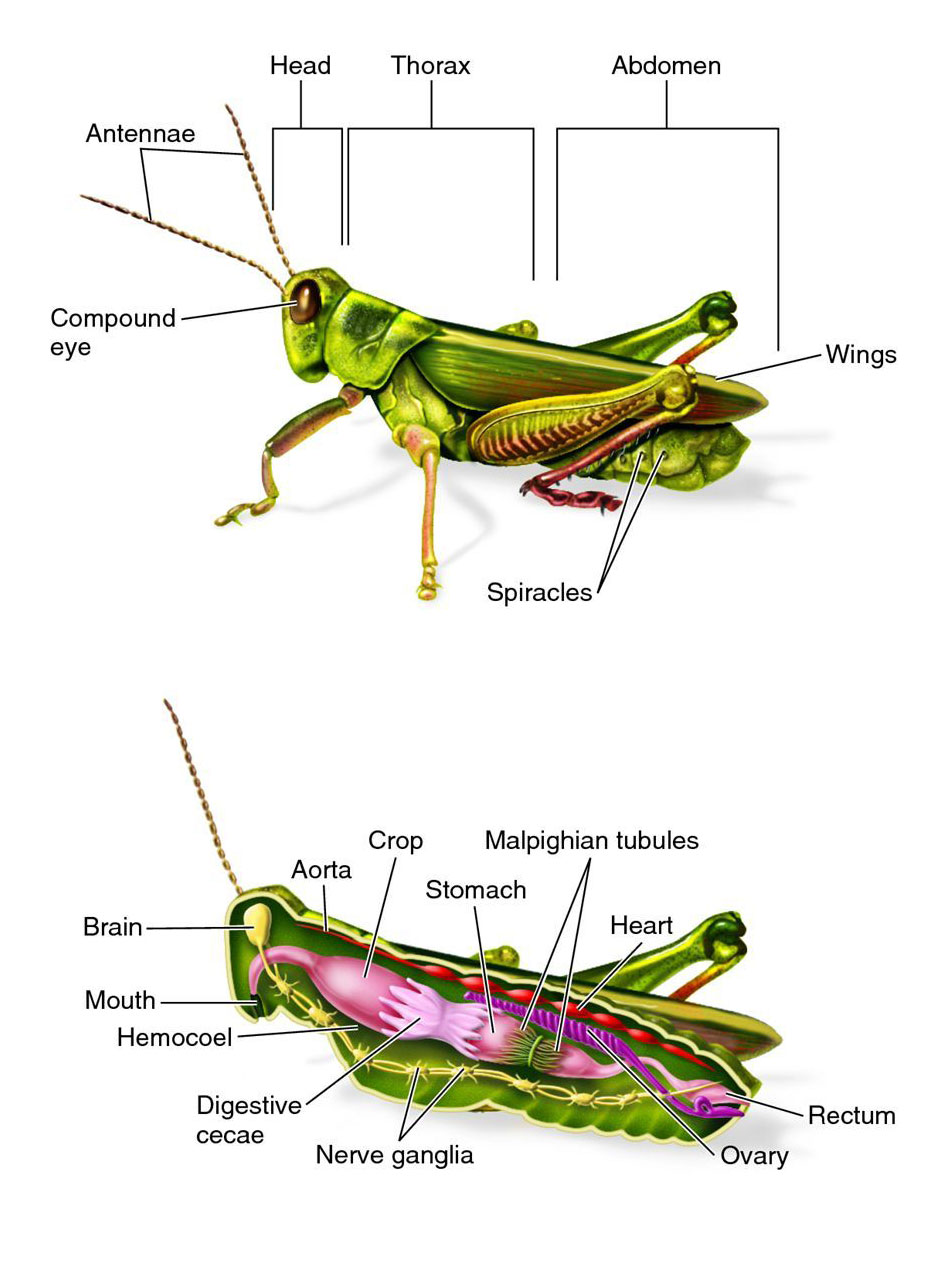
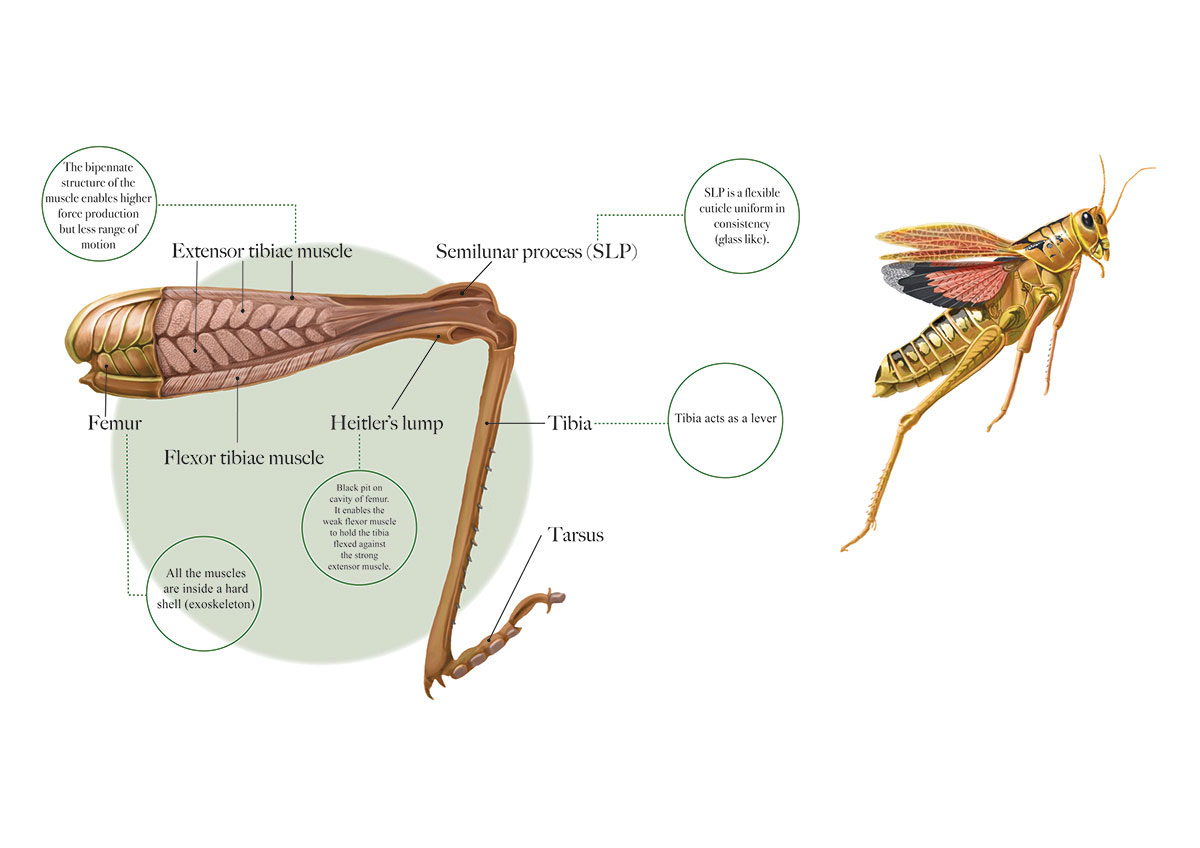
- Antennae: A pair of long sensory appendages that help the grasshopper to detect its surroundings.
- Compound Eye: Large compound eyes that enable the grasshopper to see in different directions.
- Head: The front part of the grasshopper’s body where the sensory organs and mouthparts are located.
- Thorax: The middle section of the grasshopper’s body where the wings and legs are attached.
- Wings: Two pairs of wings – front wings (forewings) and hind wings (hindwings), which allow the grasshopper to fly or jump.
- Legs: Six jointed legs that are used for movement, jumping and walking.
- Abdomen: The rear part of the grasshopper’s body where the digestive, reproductive and excretory systems are located.
- Ovipositor: A tube-like structure used by the female grasshopper to lay eggs.
- Spiracles: Openings on the sides of the abdomen through which the grasshopper breathes.
- Tympanum: Two sound-receiving organs located on the front legs of the grasshopper.
- Femur: The largest segment of the leg, located between the thorax and the tibia.
- Tibia: The second segment of the leg, located between the femur and the tarsus.
- Tarsus: The third and smallest segment of the leg, located at the end of the leg and used for gripping surfaces.
You may also like these posts



